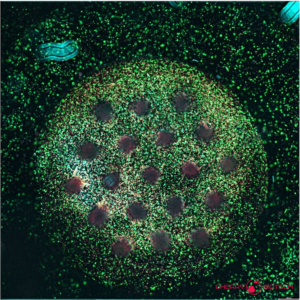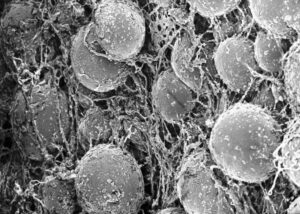Authors: Priyanka Fernandes, Harry Dawson, Ethan N.P Vong, Pierre Savagner, Dario Fassini
Breast cancer remains one of the leading causes of cancer-related mortality in women. To address patient heterogeneity, overcome drug resistance, prevent metastasis, and improve treatment efficacy, personalized therapeutic approaches are gaining increasing importance. The tumour microenvironment (TME) plays a critical role in driving cancer progression and shaping therapeutic outcomes. However, most existing 3D in vitro models fail to adequately mimic tumour–stromal complexity.
We present our 3D immunocompetent breast cancer model, designed to support personalized medicine and drug screening with a human, physiologically-relevant platform capturing the tumor microenvironment interactions.
- Luminal B breast cancer model from patient-derived xenograft cells (PDX) from individual resistant to first-line treatment, showcasing the potential for personalized therapy
- Fibroblasts and macrophages co-culture in ECM demonstrating the influence of the microenvironment on therapy resistance
- Integration of the model into our CubiX microphysiological system enabling real-time monitoring of oxygen, glucose, lactate and temperature
- Evaluation of of chemotherapies using live imaging, biochemical assays, immunofluorescence and histology
Download our poster to see how our breast cancer model powered by our technology is supporting precision medicine and oncology research.
The poster, titled: Development of a 3D immunocompetent breast cancer model to accelerate drug testing and personalised medicine – is free to download here. Don’t miss out!






